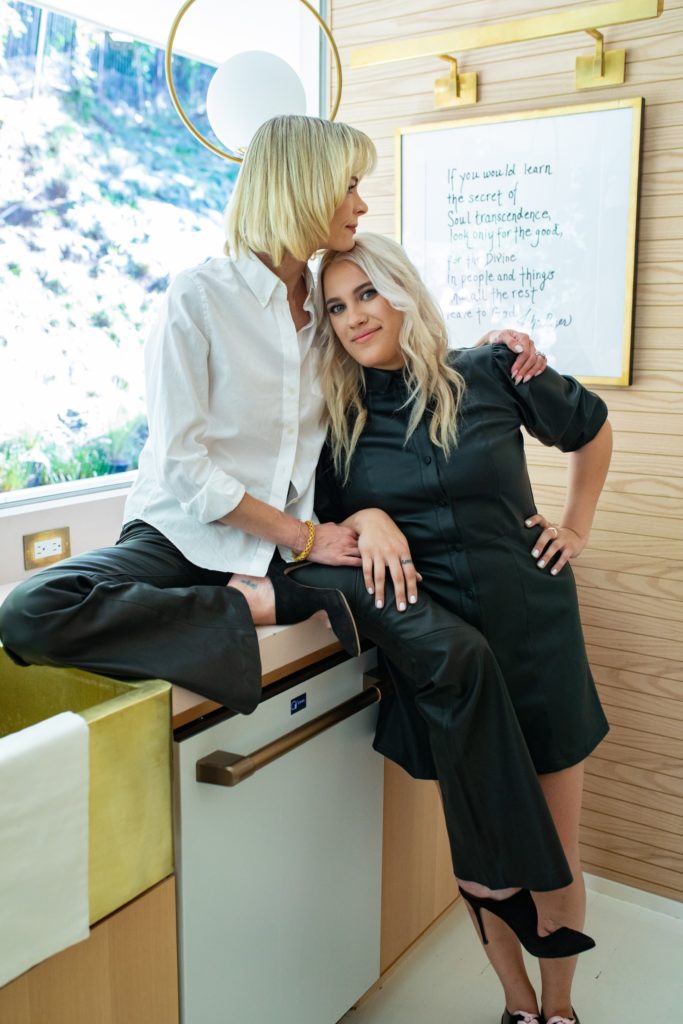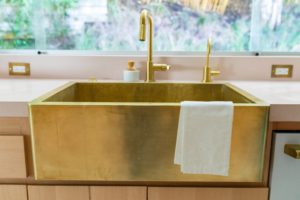
Tell us about yourself.
My company, Gabrielle Santiago Design, has exemplified storytelling through my unique process built around practicality, functionality and personality in order to construct a home worth loving. My custom and one-of-a-kind design can be seen from unique modern commercial spaces to opulent private residences in New Orleans, Chicago, Beverly Hills, Bel Air, Newport Beach, Stone Harbor, New York and Malibu.
From my years working as a celebrity ghost designer in Chicago, Los Angeles, and New York, I developed an aptitude and passion for designing custom textiles, wallpaper, and furniture. From working alongside other veteran interior designers, I came to understand the importance of progressive and perennial design.
Building on my career, my approach translated into the development of luxury homes domestically and internationally. My hands on emotional and innovative technique impacts every decision of the design process, from design to construction and manufacturing.
My collaboration with area craftsmen, local suppliers, and my early commitment to one of a kind design-connected with intention, engaged the high-end clientele I design for today. My designs are a mix of creativity and functionality to serve a purpose for the higher good so your home can become a valuable tool to improve your everyday life.
You recently completed a kitchen renovation project for actress Jamie King. What was the inspiration for Jamie’s kitchen?

I always try to maintain the historical and structural integrity of a space as much as possible. When I found out this home was originally built by Walt Disney, I knew that I had to figure out a way to honor his original thought process when it came to the floor plan. I wanted to create a space that looked like it could have always been there yet allow it to be progressive in its own way that felt modern yet warm.
What challenges did you face, if any, when designing her kitchen?
This home was very white when I first got my hands on it. White walls, White Floors, White Cabinets. Not to mention – This was probably the smallest kitchen I have ever worked on and removing walls was not an option due to my initial concept of maintaining the structural integrity. I did not want to transform a mid-century modern house into a forced open floor plan. I don’t believe in forcing a structure to be something it’s not. So, I had to get really creative when it came to maximizing the floor plan and finding creative solutions for problems. It was challenging but the process was incredibly fun.
Tell us about your experience with Thompson for the project…

I was really excited to work with Clifford on this project. I always loved Thompson brass fixtures but when it came time to pick out a sink for this particular project, I HAD to go custom. Clifford made my vision of a flat brass sink come to life and I couldn’t be happier with the result.
What trends do you see right now in interior design or decorating?
I can’t say I believe in trends. However, I sometimes get stuck on design ideas. For Jaime’s kitchen, I could not get away from the idea of colored glass. I had a dream of just rows of colored glasses in this kitchen and could not stop thinking about it until I made it happen. I think trends happen when we are willing to take the risk at doing something others are not. If you think it’s neat – DO IT! I love when I see new design concepts and can think to myself “wow – that’s really interesting. I would have never thought to do that” That to me is more valuable than a trend.
What finishes or other metals are your favorite?
Although I use different metals to encapsulate different feelings, I’m a big fan of antique brass.
What have you learned during your career to date that you would share with others?
The worst thing someone could ever say to me is “that’s cookie cutter.” I think one of the biggest lessons I have learned while embarking on my journey has been not to let fear drive my decisions and peoples’ opinions lesson my designs. In the beginning instead of pursuing my “out of the box” designs, I would tone it down to be less “ME” in order to create something more basic. However, I have found that the more authentic I am to my ideas, the greater my success. I’ve been able to get to where I am not by just risk taking in my career but also risk-taking in my design and learned to stick to my gut when it comes to design and be selective of the projects I accept and take on. If you remove fear, you insert progression. That’s the most important thing anyone could ever teach you.
